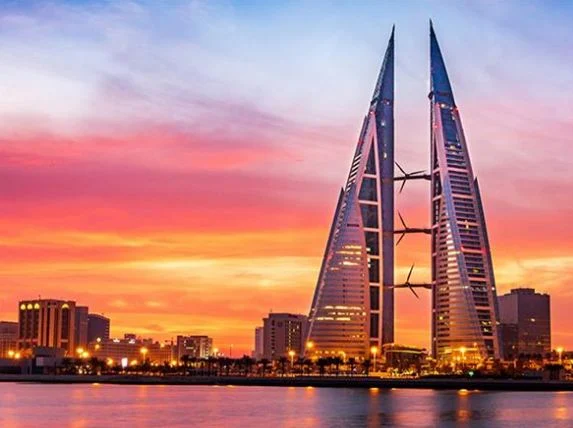Introduction Bahrain World Trade Center
The Bahrain World Trade Center (BWTC) stands tall as a symbol of sustainable innovation in urban architecture. Located in Manama, the capital city of Bahrain, this remarkable building has revolutionized the skyline with its unique blend of cutting-edge design and environmentally conscious features.
At the heart of the BWTC's sustainability credentials lies its iconic twin-tower structure, featuring three massive wind turbines. These turbines, soaring between the towers, harness the strong winds prevalent in the area, generating clean and renewable energy to power a significant portion of the building's electricity needs.
Outlook Bahrain World Trade Center
The operational wind turbines at the BWTC have the remarkable capacity to generate approximately 1,300 megawatt-hours of electricity annually. This sustainable energy production not only reduces the building's reliance on traditional power sources but also offsets an estimated 1,500 tons of carbon dioxide emissions each year, contributing to a greener and cleaner environment.
In addition to its wind turbines, the BWTC boasts a range of other eco-friendly features. Its advanced facade incorporates high-performance glass that maximizes natural daylight, minimizing the need for artificial lighting and reducing energy consumption. This design element not only enhances energy efficiency but also creates a more pleasant and productive workspace for occupants.
The BWTC's commitment to sustainability extends to its cooling system, which utilizes seawater for efficient and eco-conscious temperature regulation. By tapping into the surrounding seawater, the building reduces energy consumption and lessens the strain on freshwater resources, furthering its environmental impact.
Recognized for its exceptional sustainable design, the BWTC has earned the esteemed LEED (Leadership in Energy and Environmental Design) Gold certification. This certification underscores the building's exemplary green features and its contributions to sustainable practices, making it a role model for future sustainable architectural projects.
Beyond its remarkable green features, the BWTC serves as a dynamic hub for commerce, accommodating a diverse range of businesses, retail spaces, and conference facilities. This architectural marvel not only promotes sustainable practices but also fosters economic growth and innovation in the region.
The Bahrain World Trade Center stands as a testament to the harmonious fusion of aesthetics, functionality, and sustainability. Its remarkable achievements in renewable energy generation, energy efficiency, and environmental responsibility set a new standard for sustainable urban development, inspiring a global shift towards more eco-conscious architectural practices.
Fact and Data Bahrain World Trade Center
- The operational wind turbines at the BWTC can generate approximately 1,300 megawatt-hours of electricity annually.
- The wind turbines offset an estimated 1,500 tons of carbon dioxide emissions each year.
- The building's high-performance glass facades optimize natural daylight, reducing the need for artificial lighting.
- The BWTC's cooling system utilizes seawater, reducing energy consumption and minimizing strain on freshwater resources.
- The building has been awarded the LEED Gold certification for its sustainable design and practices.
- The BWTC serves as a bustling hub for businesses, retail spaces, and conference facilities, promoting economic growth and innovation.
- The architectural marvel of the BWTC sets a new standard for sustainable urban development.
- The building inspires a global shift towards eco-conscious architectural practices.


